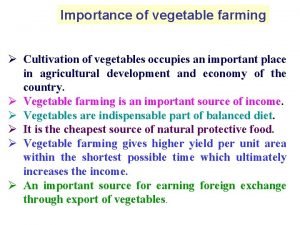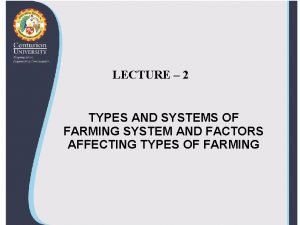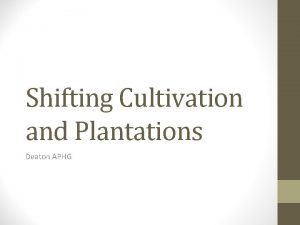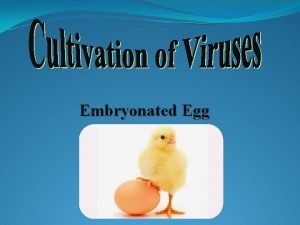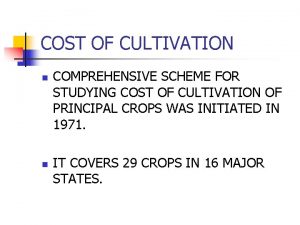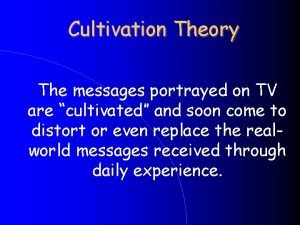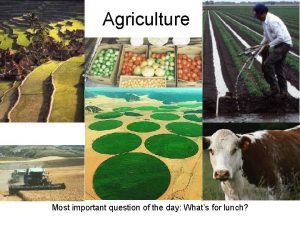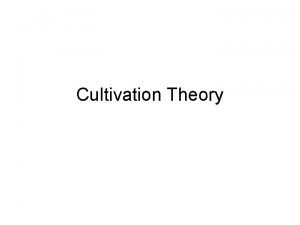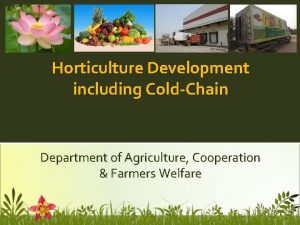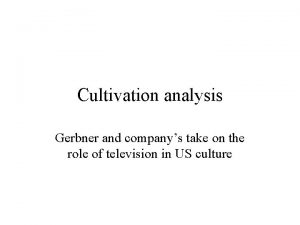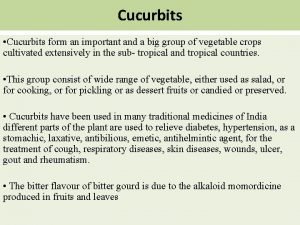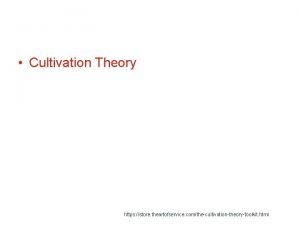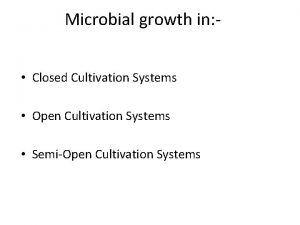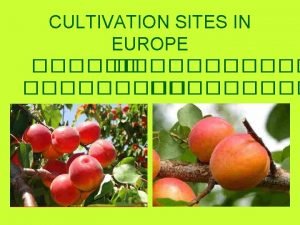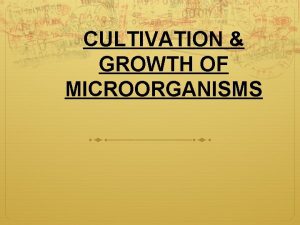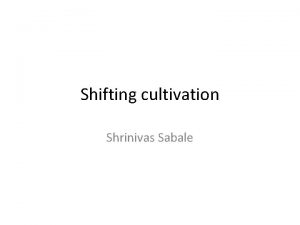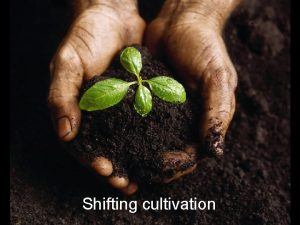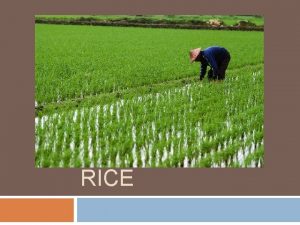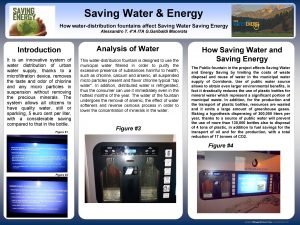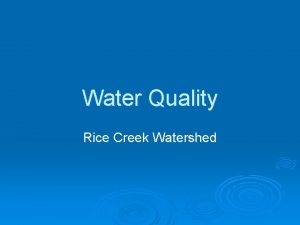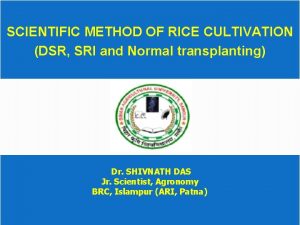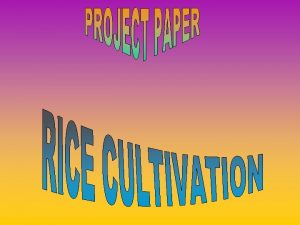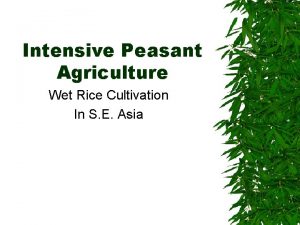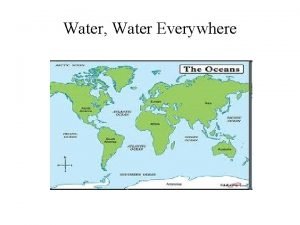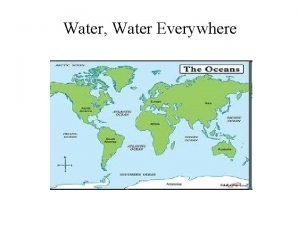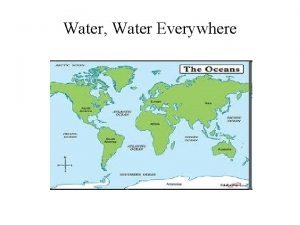Water Saving in Rice Cultivation Rice cultivation Rice






















- Slides: 22

Water Saving in Rice Cultivation

Rice cultivation Rice is a water intensive crop. Preferably it is not grown in areas with scarce groundwater resources It remains popular because it is low risk, high yield subsistence crop As an intermediate solution there are some water saving cropping systems that can be considered…

Water Saving Methods Several water saving methods for rice cultivation exists. Two examples: § System of Rice Intensification (SRI) § Conservation Agriculture (Zero Tillage)

System of Rice Intensification(SRI) A completely new method to grow irrigated rice using substantially less water

SRI – Some Principles § Early transplanting (8 -12 days seedlings) § Careful transplanting (with seed, soil, root) § Wide spacing (25 X 25 cm spacing) -only one plant/hill to preserve potential tillering and rooting § Weeding and aeration § Water Management (keeping the soil moist but not saturated - Intermittent wetting) § Compost (Add 1. 5 ton/ha of FYM +Fertilisers)

SRI – Some Principles § Fields are kept unflooded, moist and well aerated throughout the vegetative growth § A thin layer of water (1 -3 cm) in the field during the reproductive phase § Wide spacing (25 x 25 cm to 50 x 50 cm) and only one plant/ hill § Early and frequent weeding

Some monitoringresultsfrom Andra Pradesh, India Treat Through ments irrigation (mm) Tra ditional Wetting and drying SRI Through rainfall Total (mm) 913 296 1209 730 296 1036 673 296 969 Water application

SRI comparedwith other treatments Treatments Parameters Grain yield (kg/ha) % increase of grain yield in different treatments when compared with farmers practice Traditional Wetting / drying SRI 6250 6580 8380 - 5. 0 34. 0 730 673 - 20 26 5. 2 6. 4 8. 6 Amount of water (mm) applied during crop growth period through 913 irrigation % of irrigation water saved in different treatments when compared with farmers practice Water use efficiency (kg/ha mm)

Conservation. Agriculture 1. Reduced/minimum soil disturbance, 2. Reduced soil compaction, 3. Residue management, 4. Innovative cropping systems, cultivar choices etc.

Reduced. Soil Disturbance Rice Fallows Surface Seeding

Reduced. Tillage: Direct Seeded Rice Stale bed method

Reduced. Soil Disturbance Furrow irrigated raised beds Rice

Laser Land Levelling § Increases irrigated area § Improves crop stand yields § Additional field area added

Timely Planting: Higher. Profits Relation sowing date & yield for rice and wheat Sowingdate of rice in nursery Planting time, Wheat Yield Loss: 35 -67 kg/day/ha

Reducesoil compaction : Zero-Till. Technology Paired Rows ZT-Wheat Controlled traffic-Paired Row Controlled Traffic Combination of controlled traffic and paired rows also possible

Crop Residues. Management § Incorporation / surface retention of residues builds up soil structure § Residues when mulched provide a better habitat for beneficial insects to proliferate. Stubble shaved & dried Anchored and loose straws in combine harvested areas Residues Burning

Brown. Manuringin Direct Seeded Rice No additional irrigation water, 50% less weeds, Supply 20 Kg N, control second flush of weeds

Economics of R-W system Zero-till rice is more profitable when preceding crop is also no-till planted

Conservation. Agriculture § Timely sowing § Higher yields § Better nutrient and water use efficiency § More diverse rotations § Prevent residue burning

Conservation. Agriculture § § § Better crop stands Lower costs Less water pollution, less ground water mining Fewer weeds and pests More C sequestration and better soil health

Conclusion Even in areas where there are considerable differences between groundwater recharge and groundwater exploitation several mitigating measures are possible to restore the balance

Resource Conserving Technologies: A Paradigm Shif for Transforming Agriculture Raj K. Gupta, Regional Facilitator, Rice-Wheat Consortium/ CIMMYT-India, New Delhi
 Intensive rice cultivation
Intensive rice cultivation Water and water and water water
Water and water and water water Cultivation analysis
Cultivation analysis Taungya cultivation most popular in
Taungya cultivation most popular in Landwechselwirtschaft und wanderfeldbau unterschied
Landwechselwirtschaft und wanderfeldbau unterschied Importance of vegetable farming
Importance of vegetable farming Cultivation of viruses
Cultivation of viruses Zabo cultivation definition
Zabo cultivation definition Bp blg. 232
Bp blg. 232 Shifting cultivation aphg
Shifting cultivation aphg Method of cultivation of virus
Method of cultivation of virus Cultivation
Cultivation Cost of cultivation scheme
Cost of cultivation scheme Viral inoculation in embryonated egg
Viral inoculation in embryonated egg Define cultivation theory
Define cultivation theory Whats shifting cultivation
Whats shifting cultivation Cultivation theory definition
Cultivation theory definition Scope of protected cultivation
Scope of protected cultivation Art of cultivation
Art of cultivation Cultivation analysis
Cultivation analysis Snap melon in hindi
Snap melon in hindi Polarzone klimadiagramm
Polarzone klimadiagramm Cultivation analysis
Cultivation analysis





